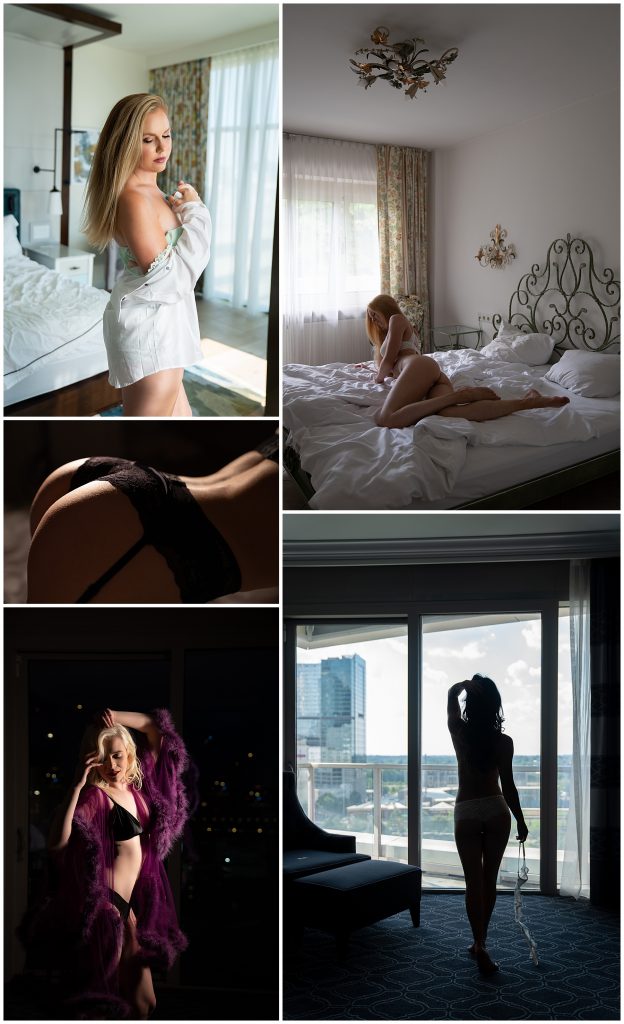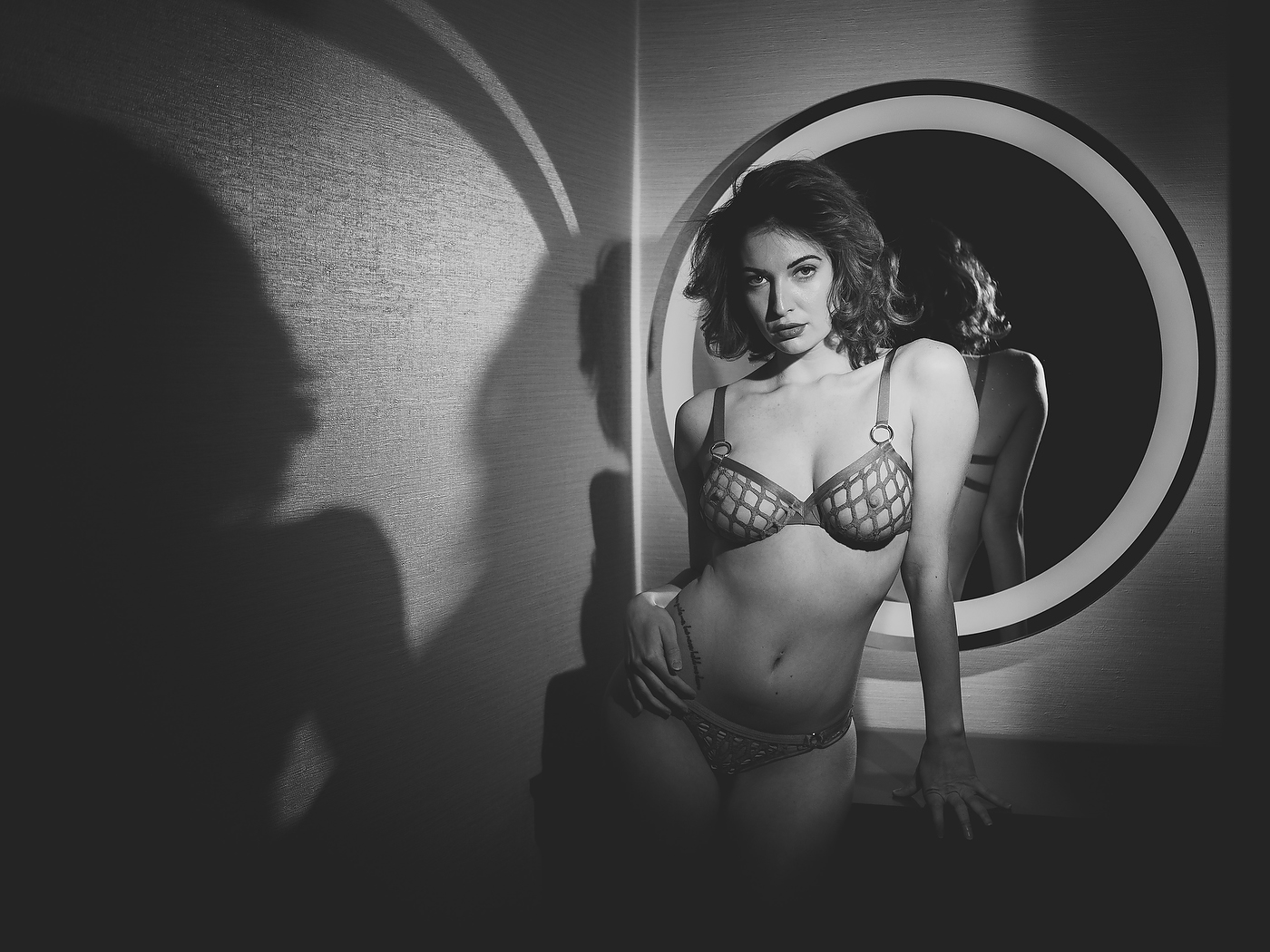WHAT IS BOUDOIR PHOTOGRAPHY?
Boudoir photography is a type of photography that focuses on capturing intimate and sensual moments in a person’s life. It is usually done in a private setting and the focus is on capturing the subject in a flattering and alluring way. Boudoir photography can be done with clothing on or off, but the goal is to create a feeling of intimacy and sensuality.
Boudoir Photography is an art form that involves manipulating light to create stunning images. While many photographers focus solely on getting the correct exposure, it’s important not to overlook the quality of light. This is especially true for boudoir photography, where shadows can be used to add drama and shape to the subject. In this post, we’ll explore the importance of shadows and how they can be used to enhance your boudoir images. The quality of light can change your images dramatically. I am not talking about exposure. I am talking about the overall look of light in your boudoir photographs.
The quality of light can change your images dramatically. I am not talking about exposure. I am talking about the overall look of light in your boudoir photographs.
SHADOWS ARE JUST AS IMPORTANT AS LIGHT
Many photographers make photographs that are perfectly lit, which is totally okay, but shadows can add drama and make your images more interesting and have an art aspect. Shadows are just as important as light. Their placement, depth, and edge sharpness are significant for any image. Their correlation with lit areas determines depth and structure. There are so many things you can do with shadows such as hide, shape, accentuate the body, and set a mood to the image.
You need to be in control of the shadow portions of your images and don’t just let them happen. Shadows are determined by how you set your main light. The farther away from the camera axis it is, the more prominent the shadows will be, right up to a very dramatic mood where the shadows dominate.
DISTANCE AND LIGHT SOURCE SIZE ADD (OR REMOVE) DRAMA
The transition from light to shadow plays a big role, causing what is considered “hard” or “soft” light. The sharpness of this transition is based on the light source’s size relative to the subject. A light source that is small in relation, like a Speedlight or a strobe that is far away from the subject, will create crisp shadows.
The opposite is a light that is large in relation to an umbrella or softbox when it’s closer to the subject. Be careful when changing a light’s intensity by moving it closer or farther away: This will also change shadow hardness.
SQUINT YOUR EYES TO MIMIC WHAT YOUR CAMERA SEES
The second important factor in the appearance of shadows is “fill light,” whether it is reflected light from a wall, a reflector, or even the bedsheets or another light source. Be aware of the fact that the camera sees shadows way darker and deeper than they appear to the naked eye.
What may seem a perfectly clear detail when you look at it can turn out completely black in your photo. Over time as you observe and compare you will get more and more experienced in judging shadows. My trick here is to squint my eyes when I look at a scene. This will give me an impression that is closer to how my camera will render it.
USE SHADOWS TO SHAPE AND CONCEAL
Shadows pronounce structure and they can also pronounce irregularities in a client’s skin. Watch closely to avoid problems that can increase your retouching dramatically. On the other hand, shadows can also shape the female form. Shadows can hide problem areas as well as mold the bust, back, hips, and athletic abdomen in a beautiful way.
Shadows can be alluring and sexy when used correctly. Not every situation works well with adding shadows to the mix. My best advice would be to play with the light to see what you get and if you and your client love it then you are golden!
USING COLOR TEMPERATURE TO CREATE MOOD
In addition to shadows, color temperature is another important element to consider when creating mood in boudoir photography. Color temperature is the warmth or coolness of the light source, which can range from orange/yellow (warm) to blue (cool). Using warmer tones, such as candlelight or tungsten bulbs, can create a cozy and intimate mood in your images, while cooler tones, like daylight or LED lights, can create a more modern and edgy look.
Experiment with different light sources and their color temperatures to see how they affect the overall mood of your images. Keep in mind that the color temperature of the light in the room can also affect the final result of your images, so be aware of any other light sources in the space.
USING LIGHT TO FLATTER YOUR SUBJECT
In boudoir photography, the goal is to make your subject feel beautiful and confident. Using light to flatter your subject’s features is an essential part of achieving this goal. For example, positioning your light source above your subject and pointing it downwards can create a flattering and slimming effect, as well as enhance the eyes and cheekbones. Using a reflector or fill light can help to balance out any harsh shadows and create an overall softer look.
Experiment with different lighting setups and take the time to study your subject’s features to determine the best way to flatter them with light. Remember, it’s not just about getting the correct exposure, but also about creating a mood and making your subject feel confident and beautiful.
Final thoughts: Shadows are an essential element in creating visually striking boudoir photographs. They can add depth, structure, and mood to an image, as well as conceal problem areas and highlight the beauty of the female form. However, it’s important to remember that shadows need to be controlled to avoid causing problems such as overly dark and deep shadows, which can lead to excessive retouching. By playing with the light, adjusting the distance and size of the light source, and understanding how shadows work, you can take your boudoir photography to the next level and create stunning, captivating images.

Written by Critsey Rowe owner and photographer Couture Boudoir®
Critsey is an experienced, internationally published, and leading expert in boudoir photography who has dedicated her career to helping women feel comfortable and beautiful. Her commitment to excellence and innovation has earned her a loyal following and solidified her reputation as one of the top boudoir photographers in the world.
Instagram @coutureboudoir
Website: www.coutureboudoir
Email: Hello@coutureboudoir.com
Instagram: https://www.instagram.com/coutureboudoir/
Youtube: https://www.youtube.com/c/critseyrowe
YOUTUBE
Want to learn more about boudoir photography tips and tricks? Check out my YouTube Channel
